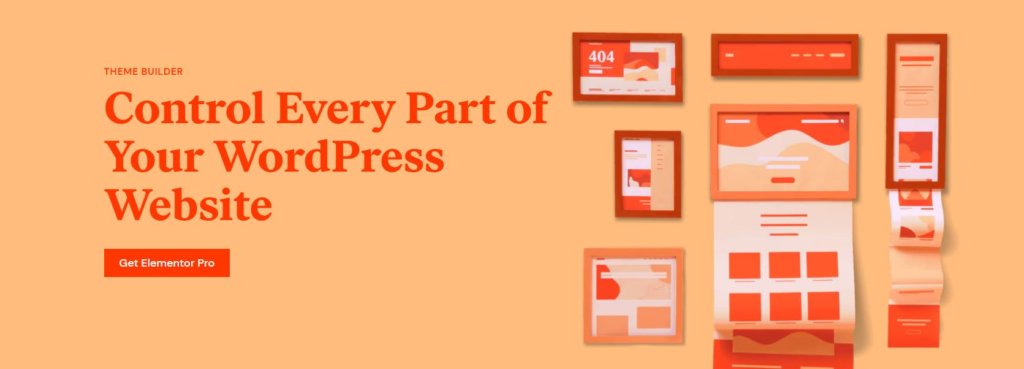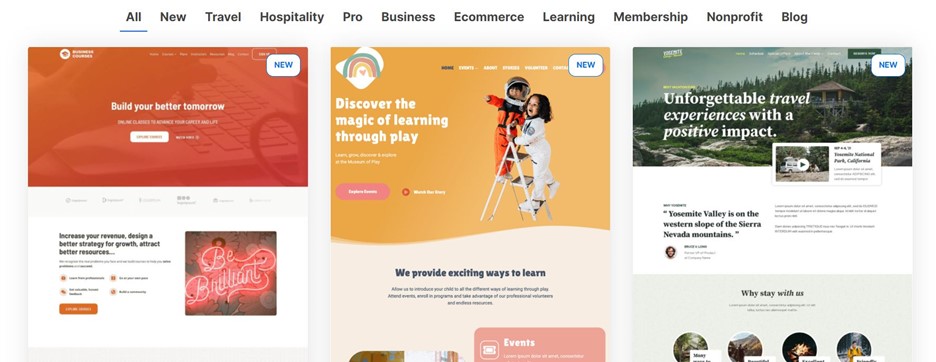1 Writing a blog post - A challenge for beginners
For many people, writing a blog post can be a daunting task. After all, a blog post is an opportunity to share your thoughts and ideas with the world.
But where do you start? And what should you write about? If you’re struggling to get started, here are a few tips to help you write your first blog post.
First, choose a topic that you’re passionate about. This will make it much easier to write about, and your readers will be able to tell if you’re truly enthusiastic about your subject matter.
Second, don’t overthink it! Just start writing and see where the words take you. Third, be yourself. Write in your own voice and style, and don’t worry about trying to sound like an expert. Your readers will appreciate your authenticity.
Lastly, have fun! Writing should be enjoyable, so don’t put too much pressure on yourself. Just relax and let the words flow. With these tips in mind, writing your first blog post will be a breeze!
Now it comes to how to structure a blog post. Let’s see
2 The perfect structure for a blog post
A great blog post has a solid structure that helps to keep the content focused and easy to read. The perfect blog post starts with a catchy headline that grabs readers’ attention and entices them to continue reading. The blog post’s body should be well-organized, with each paragraph exploring a different aspect of the topic. And finally, the blog post should end with a strong conclusion that leaves the reader feeling satisfied.
The following tips will help you to create a well-organized blog post:
1. Start with a catchy headline
2. Write an engaging opening paragraph
3. Develop your ideas in the main body of the blog post
4. Use subheadings to break up your text
5. Write a conclusion that leaves your readers wanting more
6. Use images, infographics and videos to enhance your content
7. Use external sources to back up your claims
8. Edit and proofread your blog post before publishing it
With these tips in mind, you’re well on your way to writing a killer blog post that will keep your readers coming back for more.
There are some more general guidelines that can help you create a well-structured blog post that will engage and inform your readers.
3 Tips for creating the perfect structured blog post
Here are some tips for creating the perfect structure for your next blog post:
1. Start with a catchy headline
Your headline is the first thing readers will see, so it needs to be attention-grabbing and relevant to the content of your post. Consider brainstorming a few different headlines before settling on the one that best represents your article.
2. Write an engaging opening
The first few sentences of your blog post are crucial in hooking readers and convincing them to stick around for the rest of the article. Start with a strong opening that will grab attention and make people want to read more.
3. Organize your thoughts
Before you start writing, take a few minutes to outline the main points you want to cover in your post. This will help you stay on track as you write and ensure that your article is well-organized and flows smoothly.
4. Use strong imagery and examples
Include photos, infographics, and other visuals in your blog post to break up the text and make it more engaging. Use examples and stories to illustrate your points and help readers understand your message.
5. Keep it concise
Blog posts should be easy to read and digest, so avoid rambling on for too long. Stick to the main points you want to make and be as concise as possible.
6. Use helpful formatting
Breaking your blog post into smaller paragraphs, using bullet points, and including subheadings will make it more readable and easier to scan. Take advantage of these formatting features to make your article more user-friendly.
7. End with a call to action
After you’ve delivered your main message, finish up with a call to action that encourages readers to take some kind of next step. This could be signing up for your email list, downloading a free guide, or leaving a comment on the post.
By following these tips, you can create a well-structured blog post that will be engaging and informative for your readers. Remember to tailor the structure of your article to fit the specific topic and audience you’re writing for to get the best results.
4 Do blog post ideas matter?
Anyone who has ever tried their hand at blog writing knows that coming up with ideas for blog posts can be a challenge. After all, there are only so many topics that you can cover in a given niche. However, while having a steady supply of blog post ideas is important, the quality of your content is also crucial.
A successful blog provides readers with valuable information they can use in their everyday lives. So, while having a stock of ideas to draw from is important, make sure you are also taking the time to create high-quality content that will keep your readers coming back for more.
5 How to write headlines that grab attention?
Headlines are one of the most important elements of an article or blog post. After all, if no one clicks on your headline, they’ll never even get a chance to read your content. So how can you write headlines that grab attention?
One of the best ways is to start with a topic idea that’s engaging and relevant to your audience. Once you have a topic in mind, do keyword research to find out what terms people are searching for related to that topic. Then, craft a headline that includes those keywords and clarifies what the article is about.
Finally, don’t forget to test different headlines to see which ones perform the best. By following these steps, you can write headlines that are sure to grab attention and get people clicking.
6 Examples of headlines that grab attention

Your post title is your first (and sometimes only) chance to make a good impression on potential readers. That’s why it’s important to ensure your headlines are attention-grabbing and informative. Here are eight tips for writing headlines to grab attention and get people clicking.
1. Use numbers: Numbers in headlines tend to perform well, especially odd numbers. Examples include “7 Ways to Improve Your Memory” or “5 Foods to Avoid if You’re Trying to Lose Weight.”
2. Be direct: Be clear and concise in your headlines. Use an active voice and avoid ambiguity. For instance, a headline like “How to Make Your Posts More Popular” is much more direct than “Ways to Increase the Engagement of Your Blog Posts.”
3. Use powerful words: Words like “amazing,” “incredible,” or “unbelievable” can help increase click-through rates. Just be careful not to overuse them, or your readers may start to tune them out.
4. Promise a benefit: Readers want to know what’s in it for them, so make sure your headlines highlight the benefits of clicking through to your post. For example, a post about saving money on groceries could have the headline “Save Money on Groceries: 10 Tips That Really Work.”
5. Make use of puns or wordplay: A clever play on words can be an effective way to get people’s attention. Just be careful not to go too overboard with the puns, or you risk sounding cheesy or clichéd.
6. Ask a question: Questions are a great way to pique people’s curiosity and get them interested in what you have to say. For example, a post about social media marketing could have the headline “Are You Making These 7 Social Media Marketing Mistakes?”
7. Use strong verbs: Verbs like “boost,” “improve,” or “increase” can suggest that reading your post will be worth the reader’s time. For example, a post about writing better headlines could have the headline “Boost Your Headline Writing Skills With These 9 Tips.”
8. Appeal to emotion: Emotional headlines tend to perform well because they elicit an immediate reaction from readers. Be careful not to come across as manipulative or overly sensational, or you risk turning people off completely. Some examples include “This Mother’s Story Will Bring You To Tears” or “The Unexpected Way One Man Found Happiness.”
With these tips in mind, you can create informative and attention-grabbing headlines.
7 The importance of including images in your posts
Any good blogger knows that a featured image is essential to catch a reader’s attention. But what many people don’t realize is that relevant images throughout the post are also important. Not only do they break up the text and add visual interest, but they can also convey important information about the topic at hand.
For example, if you’re writing a post about a new product, including an image of the product in use can be very helpful. In addition, images can help illustrate complex concepts and make your posts more accessible to a wider audience. So the next time you sit down to write a blog post, be sure to include some relevant images – your readers will thank you for it!
8 Use of copyright-free images in blogpost
When writing a blog post, it’s important to choose featured images and other relevant images that are copyright free. This ensures that you won’t get in trouble for using someone else’s intellectual property without permission.
There are a number of ways to find copyright-free images. You can search for Creative Commons-licensed images on sites like Flickr, or you can use Google Images and filter the results by usage rights. Once you’ve found some appropriate images, make sure to credit the creator in your blog post. This is good practice regardless of whether the image is copyright-free.
By following these guidelines, you can be sure that you’re using images appropriately and avoid any legal issues down the road.
9 Sources available to get copyright-free images
With the advent of the internet, finding copyright-free images has become easier than ever. Several websites now offer a wide range of royalty-free images, making it easy to find the perfect image for any project.
Pixabay, Pexels, and Unsplash are just a few of the many sources available for copyright-free images. These websites offer a variety of images, from professional photos to simple illustrations, making it easy to find the right image for any need. In addition, many of these websites offer high-quality images that can be used for commercial projects. Add images in your blog post and give your writing a visual presentation.
10 Writing catchy and interesting introductions
The introduction to your blog is your chance to capture the attention of potential readers and make them want to stick around. You must give them a reason to keep reading, starting with a strong, catchy introduction.
Your blog content will be more engaging and interesting if you take the time to write a strong introduction. Think about what you want your readers to know, and then craft an opening that will pique their interest. Be sure to use your own voice and writing style – this is your chance to show off your personality and let readers know what they can expect from your blog.
With a little effort, you can write introductions that will keep your readers coming back for more. So don’t underestimate the power of a good opener – it could be the key to success for your blog.
Use of bullet points in structuring the blog post
While there are many different ways to format a blog post, one of the most popular methods is to use bullet points. This technique allows you to organize your thoughts and present your information in a clear and concise manner.
Additionally, bullet points can help to break up a long block of text, making your post more visually appealing and easier to read. When used correctly, bullet points can be an effective tool for communicating your message.
However, it is important to use them sparingly; too many can make your post look cluttered and difficult to follow. If you use bullet points too frequently, try breaking your text into shorter paragraphs or using other formatting options such as headings and subheadings.
By taking the time to experiment with different formats, you can find the best way to structure your posts and engage your readers.
11 Are there any tools that can help me write a better blog?
Anyone who has ever tried to write a blog post knows that it can be a challenge to get the words to flow in a way that sounds natural and makes sense.
Fortunately, several tools can help you to overcome these challenges and produce a well-written blog post.
Word processors like Microsoft Word and Google Docs have features that can help you catch grammatical errors and allow you to make changes to your text without starting from scratch easily. Use of Grammarly can help you remove errors. Portent content can help you in crafting good headline and blog titles.
However, even if you don’t have access to a word processor, there are still ways to improve your writing. For instance, reading your work aloud can help you catch errors you might otherwise miss, and listening to music can help you find the right tone for your post.
By taking advantage of these tools, you can make the process of writing a blog post much easier and produce better results.
12 Writing blog post with SEO perspective

Many people think that search engine optimization is only about choosing the right keywords and stuffing them into your content as often as possible.
However, search engine optimization is about much more than that. It’s also important to consider things like the overall structure of your blog post, the title, and the meta description. In addition, it’s important to consider who your target audience is and what they are likely searching for. By keeping all of these factors in mind, you can ensure that your blog post will be optimized for search engines and that it will be able to reach your target audience.
13 Requirements to write meta titles and meta descriptions?
One of the most important elements of on-page SEO is proper keyword placement. You must include keywords in your meta title and meta description to ensure that your website is properly optimized for search engine results.
Your meta title should be no more than 60 characters long and include your keyword near the beginning. Your meta description should be no more than 160 characters long and include your keyword near the beginning.
Including keywords in your meta title and description can help improve your website’s visibility on search engine results pages.
14 Role of content management system in structuring a blog post
A content management system (CMS) is a computer program that allows users to create, edit, structure, and publish content. Bloggers often use CMSs to manage their posts, providing an easy-to-use interface for managing and structuring content. In addition, CMSs typically offer a range of features, such as the ability to track post views and comments, schedule posts, and customize the look of one’s blog.
As a result, content management systems can be a valuable tool for bloggers who want to grow their audience and increase engagement.
15 How can a well-structured blog post improve search intent?
When it comes to blog posts, search intent is everything. What are people looking for when they search for a particular topic? What information are they hoping to find? Answering these questions is essential if you want your blog post to be successful.
After all, if you don’t meet your readers’ needs, they’re likely to click away and look elsewhere.
One way to ensure that your blog post meets search intent is to structure it carefully. Start with an editor’s note that introduces the topic and sets the stage for what’s to come. Then, promise readers, that you’ll answer their questions or provide them with the information they’re looking for.
Finally, deliver on that promise by delivering high-quality content that meets their needs. By following this formula, you can help ensure that your blog post will satisfy search intent.
16 Hook readers with content marketing of blog post
Every business with a website needs to have a blog. But, more importantly, every business needs to hook readers with content marketing in their blog so that they come back for more. There are various ways to hook readers with content marketing in a blog.
To start, businesses can draw readers in by discussing current trends in their industry that relate to the goods or services they offer. They can also highlight any new products or services on their blog and provide readers with coupon codes as an incentive to purchase these items.
Additionally, businesses can host giveaways and contests on their blog to generate interest and excitement.
By hooking readers with content marketing, businesses will keep them coming back for more and encourage them to share the blog with others.
17 Final Verdict:
So, there you have it – everything you need to know about how to write and structure the perfect blog post! But of course, this is just a starting point. Once you’ve mastered the basics, it’s time to start exploring our other guides on writing great copy, formatting your posts for maximum impact, and promoting them like a pro. And if you still need help putting all of this into practice, don’t hesitate to get in touch – we’re always happy to chat about blogging and content marketing!









